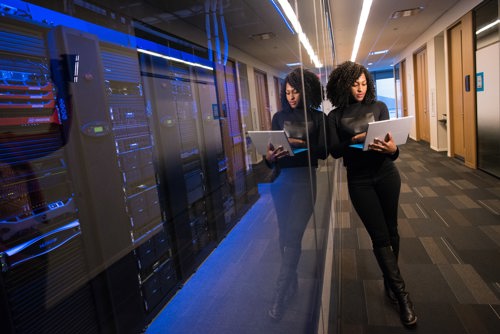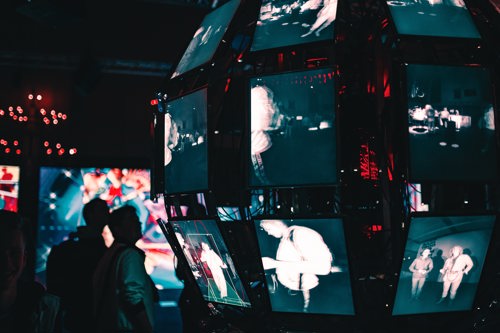Understanding the business opportunities of Extended Reality
-
Sist oppdatert
9. februar 2022
-
Kategori
-
Tema
- Technology
- Extended Reality
Extended Reality (XR) is becoming an increasingly hot topic in research, business, and in our everyday lives.
There are several terms and jargons that may be confusing on the difference between the different types of realities. In this article, we differentiate between the types of realities and highlight their main differences.
In addition, the business opportunities are endless. It has started to generate more interest by businesses to utilise those tools in several corners of organizations.
The big umbrella, extended reality (XR)
Extended reality (XR) is the big umbrella where all other classifications of immersive realities go beneath it. XR is a term referring to all real-and-virtual combined environments and human-machine interactions generated by computer technology and wearables, where the 'X' represents a variable for any current or future spatial computing technologies. See the figure 1 for the extended reality landscape overview.
Virtual reality (VR) is probably the best-known type of the existing realities. VR is computer-generated simulation of a three-dimensional image or environment that can be interacted with in a seemingly real or physical way by a person using special electronic equipment, such as goggles with a screen inside, or gloves fitted with sensors. Thus, VR is an artificial environment that is created with software and presented to the user in such a way that the user suspends belief and accepts it as a real environment. On a computer, virtual reality is primarily experienced through two of the five senses: sight and sound.
Augmented reality (AR) is an enhanced version of the real physical world, through mixing the real world with digital elements such as graphics, animations, sound, or other sensory stimuli delivered via technology. AR started to gain popularity to the common consumer through the launch of the famous game PokemonGO. The advantage of AR is that the user can experience it without the need for expensive or special equipment. A smartphone with a camera and a GPS can do it!
Mixed reality (MR) is the merging of real and virtual worlds to produce new environments and visualisations, where physical and digital objects co-exist and interact in real time. Mixed reality does not exclusively take place in either the physical world or virtual world but is a hybrid of reality and virtual reality. MR is in the mid-scale of the immersion degrees (see below figure).
Augmented and mixed realities are often confused together. Augmented reality and mixed reality are both considered immersive technologies, but they aren’t the same. Mixed reality is an extension of augmented reality that allows real (physical) and virtual elements and objects to interact in an environment. Hence, the main differences among them are, interaction & feedback.
The business opportunity
Probably the clearest application of XR in business is within the simulation realm. One of the early VR implementations dates back to mid 1980s, when NASA’s Ames Research Center developed the Virtual Interface Environment Workstation (VIEW) system, that combined a head-mounted device with gloves to enable the haptic interaction of Astronauts with space environment in a lab setting.
Nowadays, NASA uses the Sidekick (Investigating Immersive Visualization Capabilities), a modified version of the Microsoft HoloLens mixed reality smart-glasses designed to provide wearers with critical information in the form of holographic projection for astronaut training. Citizens also can have a XR glimpse into space through the free VR application (NASA SLS VR Experience) developed by NASA.
Thus, education and training environments have utilized realities for decades, and we see that XR is now penetrating other industries and contexts. For or example, MR is heavily used now in Remote Support and Customer Service, Marketing, Construction, HealthCare, Leisure (e.g., Virtual Tours), among others.

Read also
What’s with the metaverse?
Probably it is hard to discuss the different realities without tapping on the new vision called metaverse. The word "metaverse" generally refers to a virtual world that lies beyond, on top of, or is an extension of the physical world.
The metaverse is an immersive mixed reality environment that allows users to be virtually present and interact. It is a persistent space where blockchain and financial technologies could be used to pay for items and maintain a secured ledger for these transactions, which may contribute to one of the sustainability pillars, namely economic sustainability.
In addition, the metaverse has a lot of potentials for social inclusion and digital inclusion opportunities. According to the World Bank, social inclusion refers to the process of improving the terms on which individuals and groups take part in society—improving the ability, opportunity, and dignity of those disadvantaged on the basis of their identity.
Digital Inclusion on the other hand, refers to the activities necessary to ensure that all individuals and communities, including the most disadvantaged, have access to and use of Information and Communication Technologies (ICTs). Thus, Metaverse will increase the ability for virtual mobility to the physically challenged (or socially-disadvantaged) individuals.
Financial transactions
In addition, the metaverse platform supports the exchange of money and financial transactions between individuals using Crypto currencies. Some of those currencies are gaining increased volume and valuation within the Crypto exchange platforms, like the Axie Infinity (AXS) and the Sandbox (SAND) currencies.
This also led to the discussions that the metaverse environment will aid in financial inclusion and economic sustainability, and would unleash possibilities for the economically challenged individuals. Moreover, the increase in virtual mobility is expected to decrease the amount of Carbon emissions and contribute to the environmental sustainability as well.
Endless potentials
As technology gets cheaper and better, we can expect it to be an even bigger part of our lives. As technology giants like Google, Meta, Microsoft and Apple are working on, and launching easier to use and much more convenient technologies, the adoptions and applications of the metaverse in specific, and realities in general will continue to expand.
The rise of the announced metaverse will connect us with others, with things, and vice versa. Meaning that you can interact with both, other humans and physical things through some device and environment [2]. From enabling the less privileged to virtually visit places that they can’t physically reach, enabling the physically challenged individuals to conduct “physical” activities that they can’t do and increase their mobility, to completely changing the future work-environment landscape.
In addition, the metaverse will enable people to be present at more than one place at a time. Similarly, the Metaverse applications for business are endless, especially in aiding to bring experts from anywhere, enhancing remote support applications, and enabling collaborations and global problem-solving efforts.
References:
Gupton, N. and P. Kiger, „What’s the Difference Between AR, VR, and MR?“. The Franklin Institute, Saatavilla (viitattu 10.2. 2021)
Park, S.-M. and Y.-G. Kim, A Metaverse: taxonomy, components, applications, and open challenges. IEEE Access, 2022.
IDEAS Lab at Kristiania University College:
The Innovation & Digitalization for Businesses And Society Laboratory (IDEAS Lab) at Høyskolen Kristiania focuses on Innovation research in general, and Gamification applications in specific. For more info visit www.ideaslab.no.
Text:
Professor Moutaz Haddara, School of Economics, Innovation and Technology and Senior Researcher Eirik Norman Hansen, IDEAS Lab.
N

The End of Gendered Marketing
Consumers are becoming less and less receptive to gendered marketing. Time to switch to gender-neutral marketing!Les mer
What if your work was automated?
Oganizations can successfully develop automation initiatives and facilitate meaningful work by involving their employees in the process.Les mer
N2

Consumers expect brands to take a stance on key issues
Managers cannot not take a stance on key issues. Consumers and other stakeholders increasingly expect brands to take a lead on sociopolitical issues.Les mer
Bridging the gap between art and science
Artistic Development Work presents us with an opportunity to enhance our perception of art, science and academia in general.Les mer





